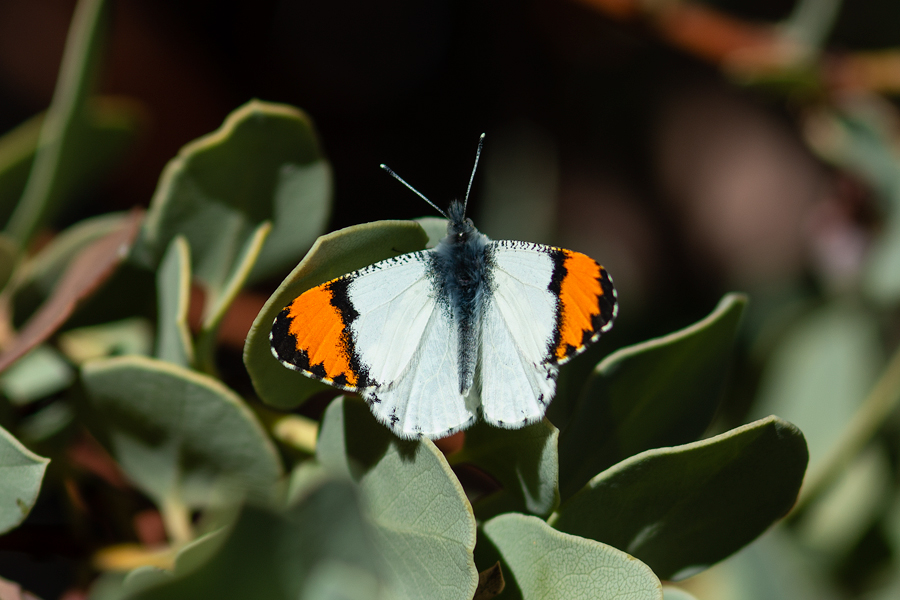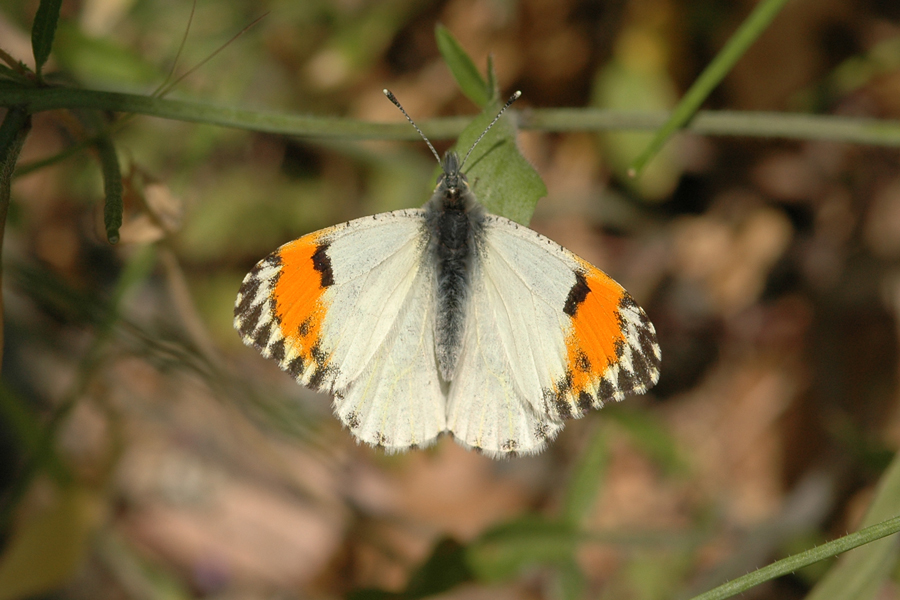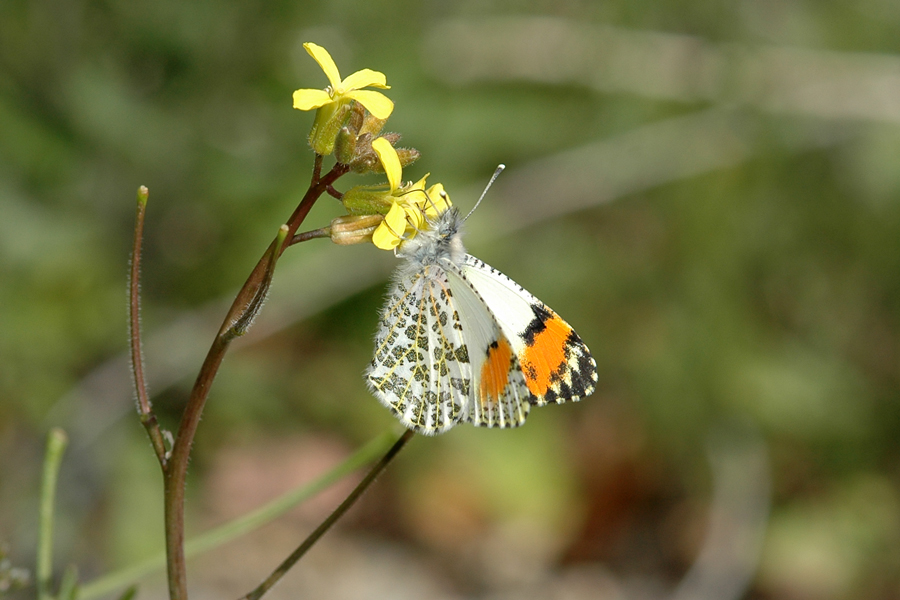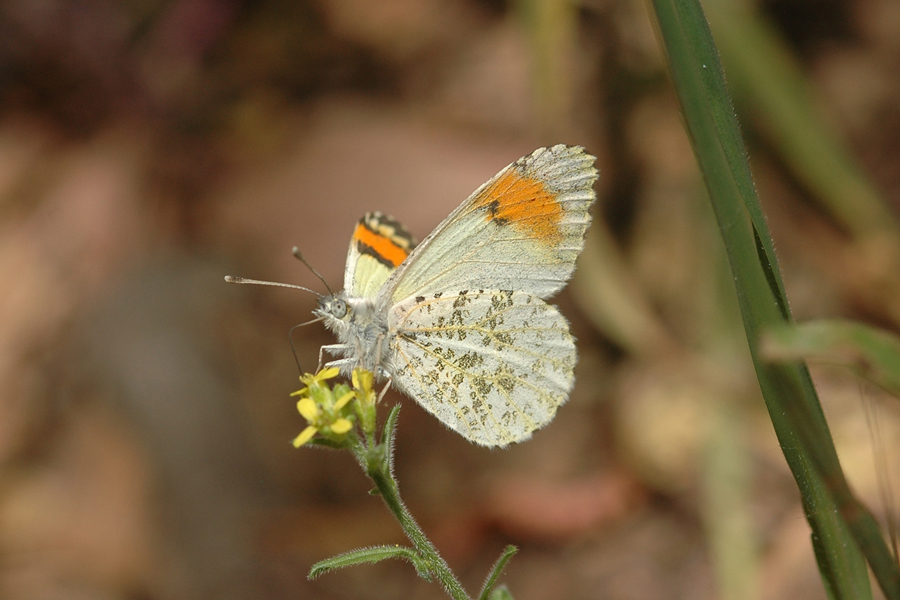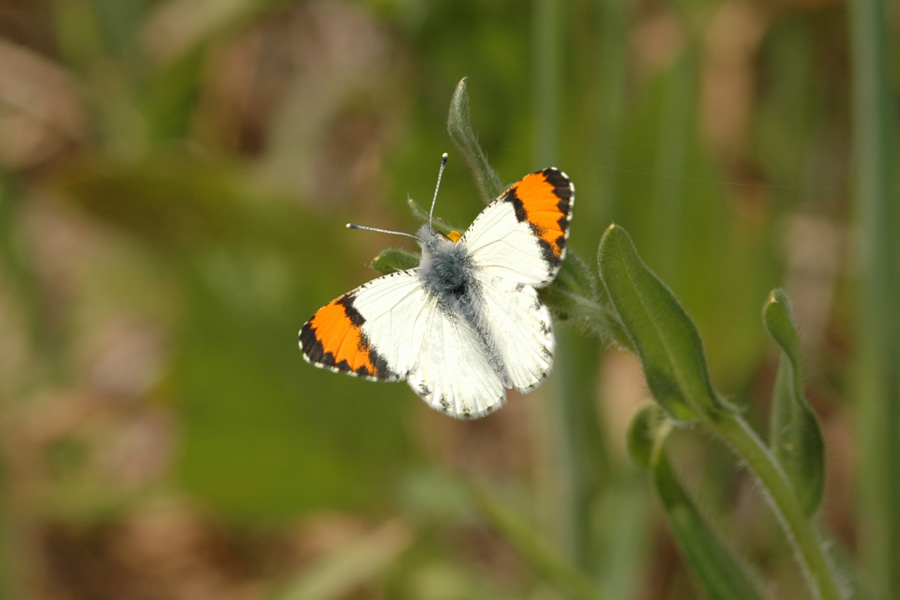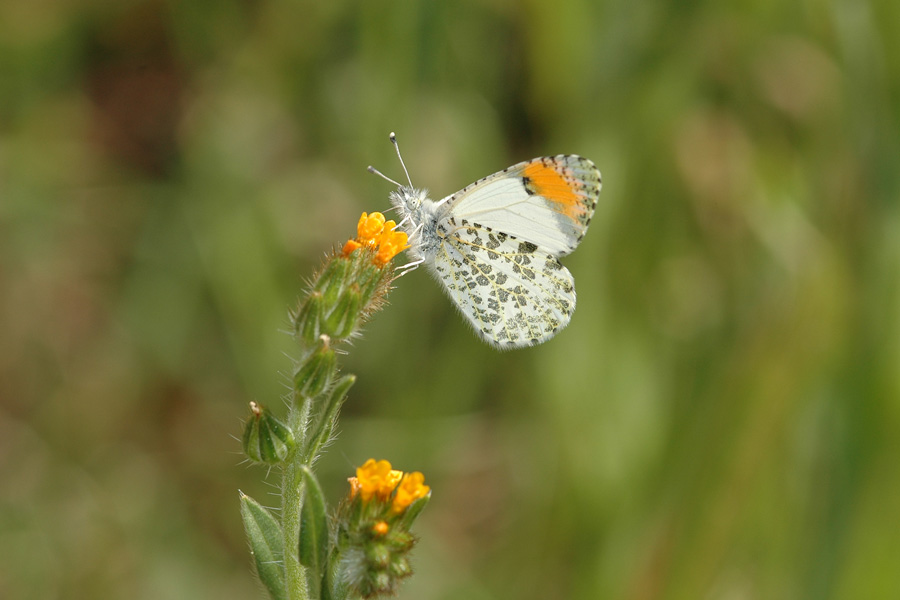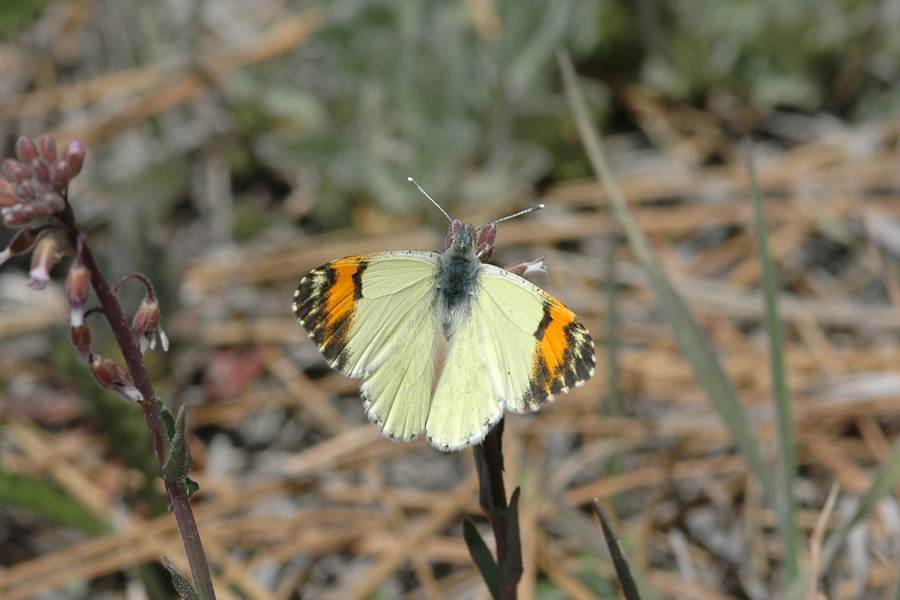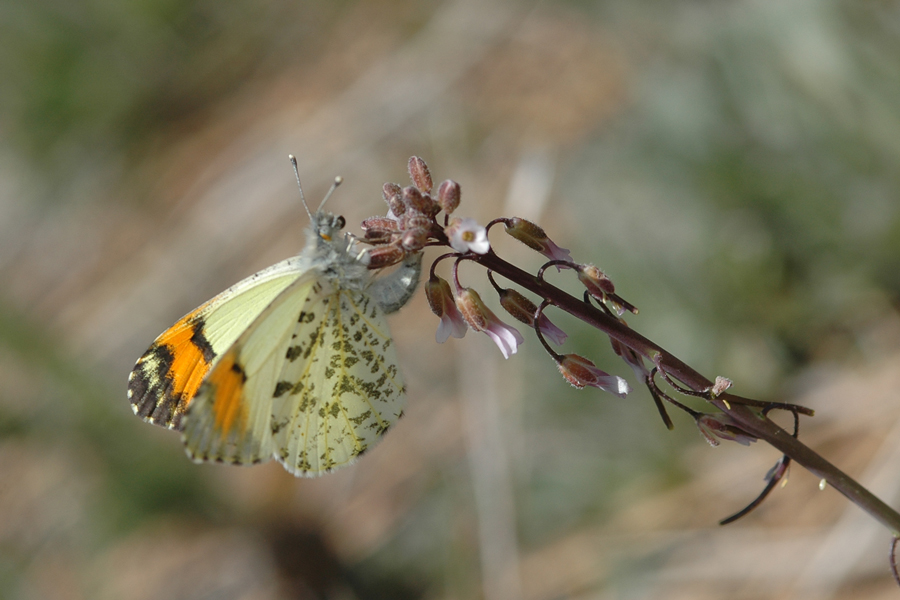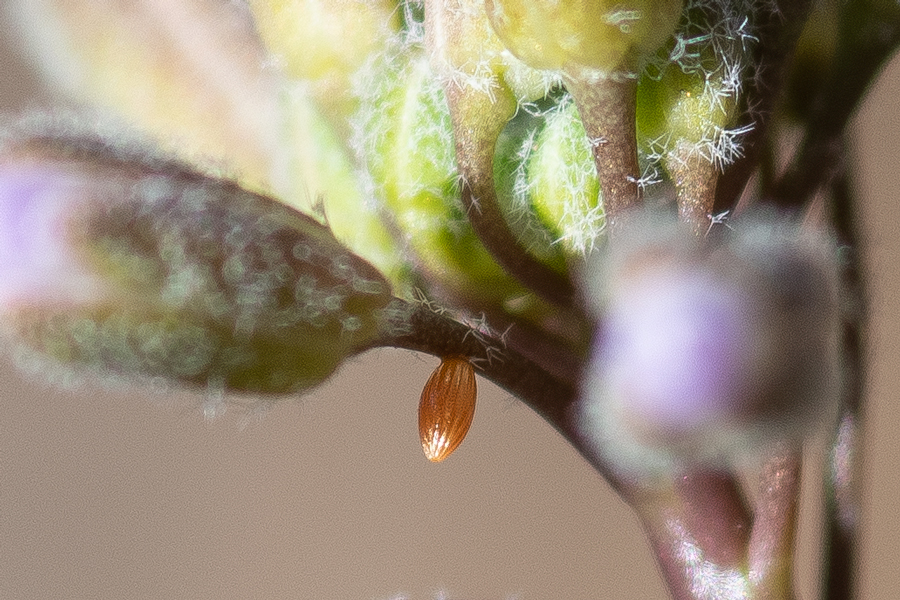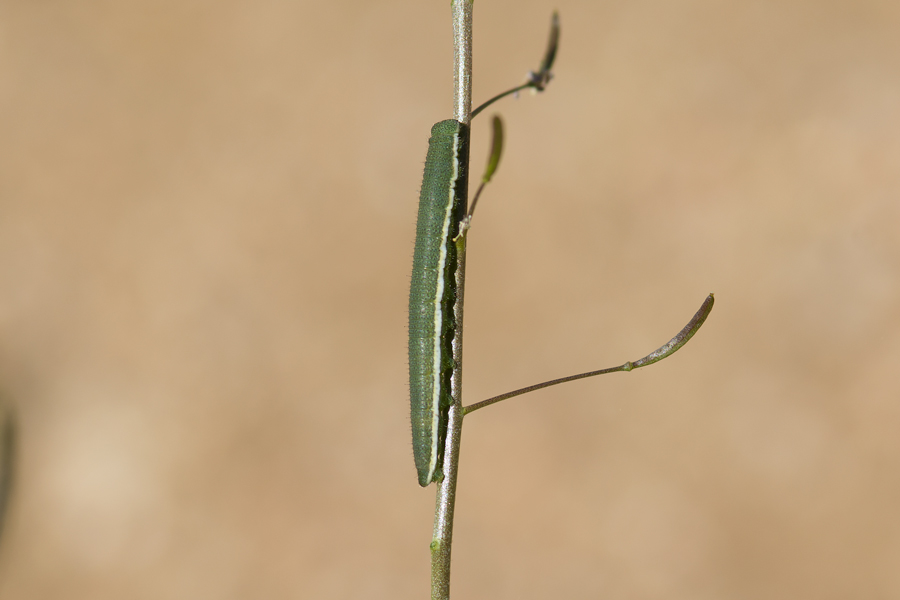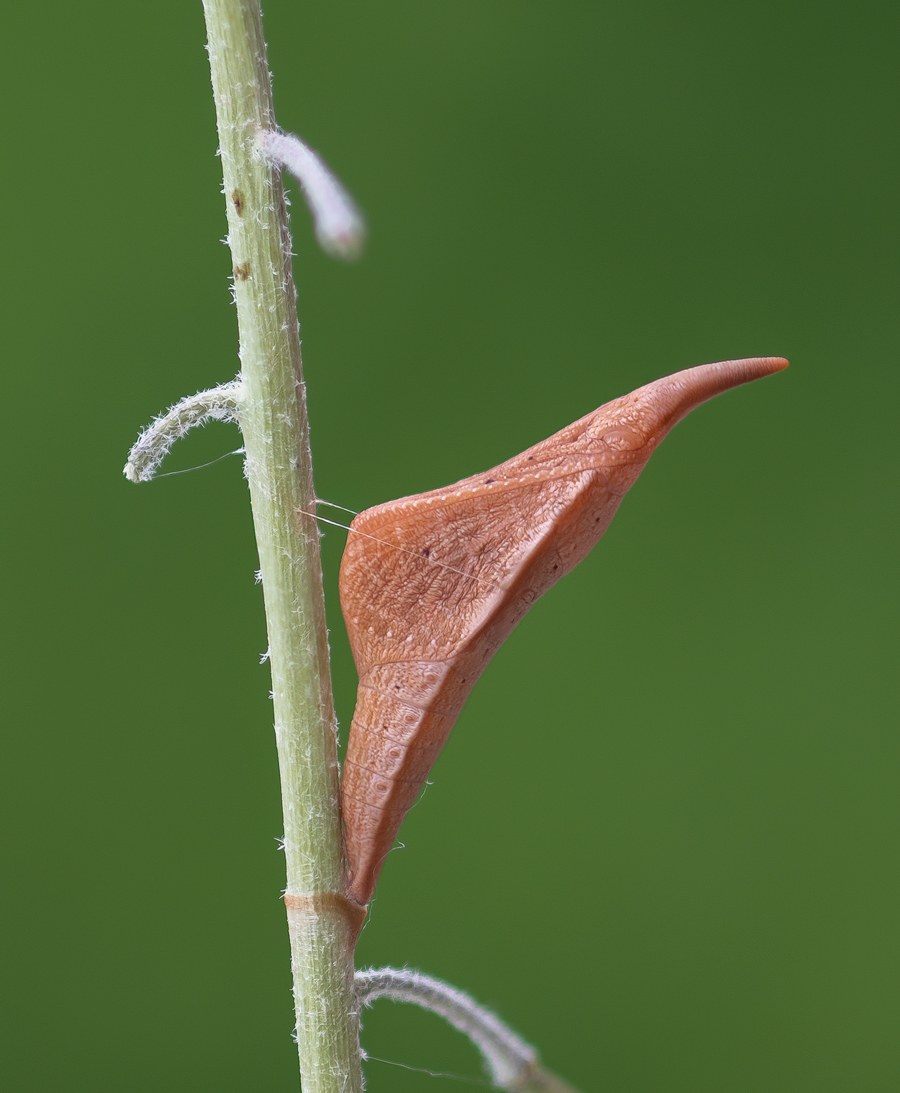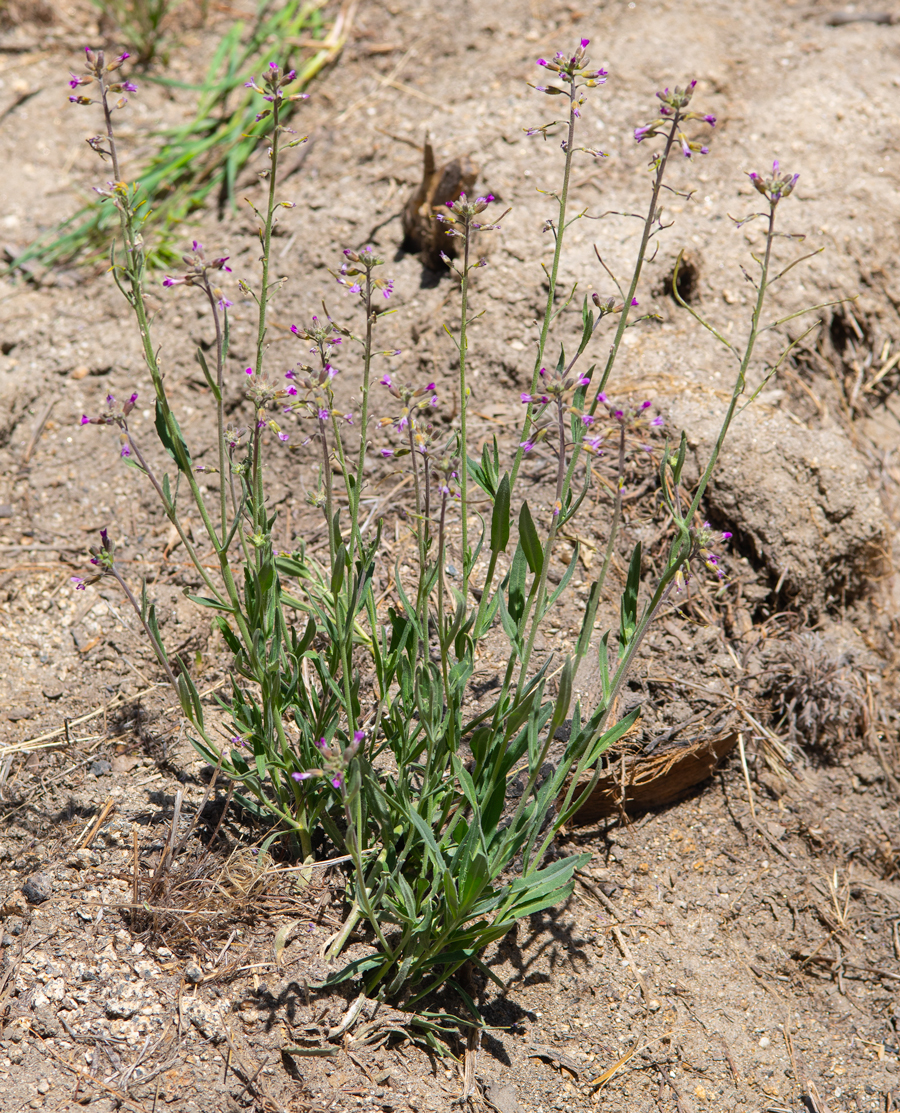Anthocharis sara sara
Sara Orangetip
A harbinger of the butterfly season in many areas, the Sara orangetip can be common where the host mustards are present. Sara often has two broods: the first is smaller, with males the first to emerge (often in February, sometimes even as early as late December). The larger-sized second brood - with lighter marbling on the underside - typically flies in May-June as conditions allow. This second flight is a partial brood. The life cycle can go quickly from egg to fully-developed larva: perhaps less than three weeks. Diapause is as a pupa, and Sara orangetips can go two or more years before emerging. So this butterfly is in a hurry to develop and get to pupation, and then it may take its time. Going through a period of cold temperatures seems to be important in order for them to emerge when things warm up in spring.
As someone who grew up in the suburbs of Los Angeles, this was a butterfly I had to get out into the field to see and photograph (I only knew it from illustrations in books), and I remember well the excitement I felt seeing them the first time in abundance early one year at Malibu Creek State Park, camera in hand. That was a long time ago, but I still love seeing this common butterfly.
The butterfly that would later be named Anthocharis sara was collected by Pierre Lorquin in California during the gold rush and sent to the Musée de Paris in 1851. Boisduval named it and presented a paper on this and other new butterflies at an 1852 meeting of entomologists. However, Pierre Lucas' redescription happened to beat Boisduval's paper to print, so Lucas is considered the author. The Emmels and Sterling Mattoon fixed as the type locality the Queen Lily Campground near Belden, North Fork of the Feather River, in Plumas County, CA. in the 1998 Systematics book (see "The Types of California Butterflies Names by Pierre Hippolyte Lucas: Designation of Lectotypes and Fixation of Type Localities," pp.77ff.).
